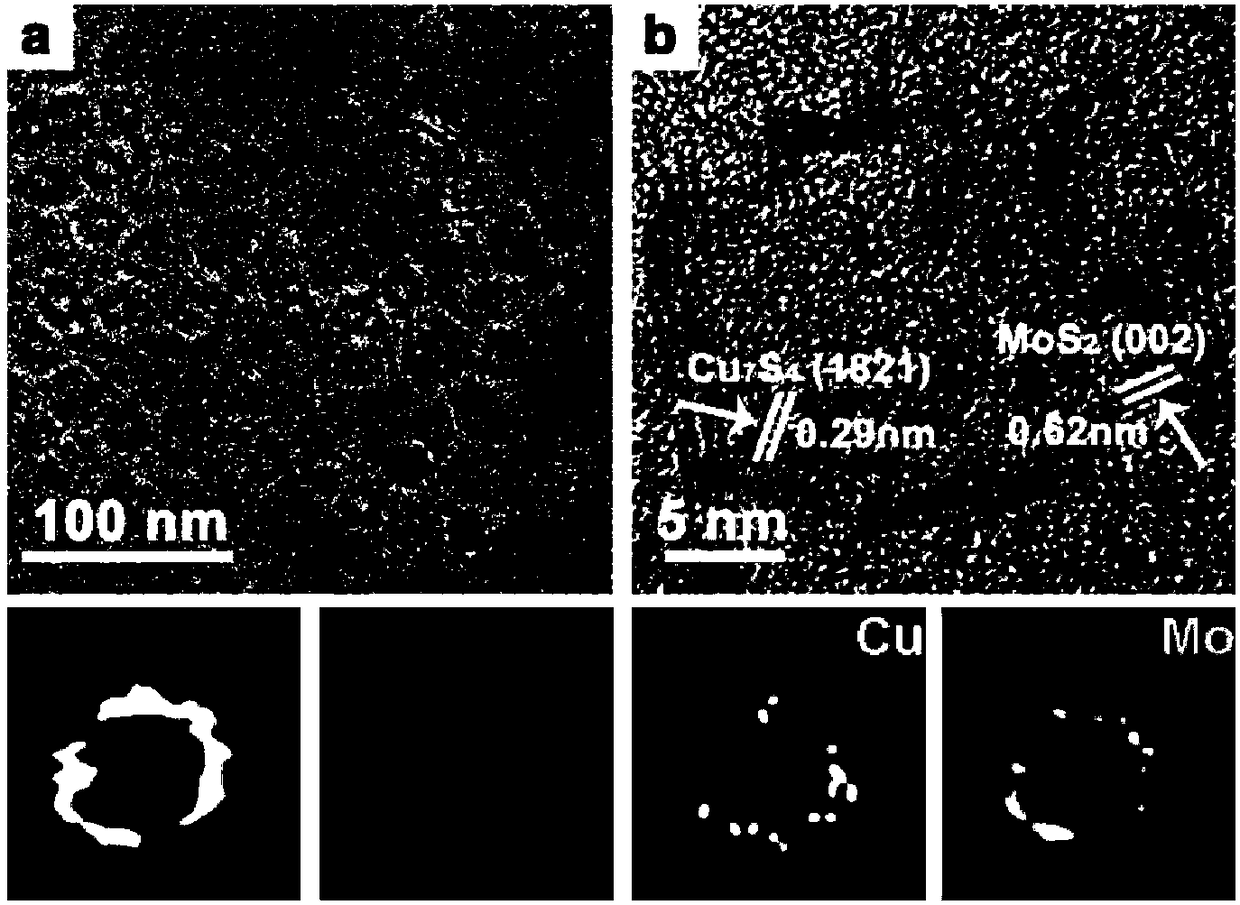A cu7s4@mos2 heterogeneous nanoskeleton material and its application in catalytic water electrolysis for hydrogen production
A nano-skeleton, catalytic electrolysis technology, applied in the direction of electrolytic components, electrolytic process, physical/chemical process catalyst, etc., can solve the problems of limited practical application, poor solubility, electrochemical stability, poor crystallinity, etc., and achieve high stability , good crystallinity, high activity and excellent effect
- Summary
- Abstract
- Description
- Claims
- Application Information
AI Technical Summary
Problems solved by technology
Method used
Image
Examples
Embodiment 1
[0018] a. Stir and mix 6ml oleylamine (OAM) and 4ml octadecene (ODE), add 0.1mmol of Cu(NO 3 ) 2 ·3H 2 O and 20 mg N,N-dibutyl-dithioformic acid at 190 °C for 15 min to synthesize the resulting Cu 7 S 4 Nanoparticles are the skeleton, continue to heat and inject 0.2mmol of MoCl at 300°C 5 and 0.4mmol of S powder, keep the temperature at 300°C for 20min;
[0019] b. After the reaction is naturally cooled, take out the reaction solution and centrifuge (12000 rpm) for 10 minutes, and keep the precipitate and dissolve it with n-hexane to collect;
[0020] c. Disperse 4 mg of C powder in n-hexane, then add it to the dispersion in step b, after ultrasonication for 80 min, centrifuge (12000 rpm) for 10 min to obtain nanocrystals loaded on the C powder;
[0021] d. Disperse the nanocrystals loaded on C powder into 40mL of acetic acid, stir at 70°C for 15h to remove the surface ligands, and centrifuge (12000 rpm) for 15min to obtain Cu 7 S 4 @MoS 2 For the heterogeneous nano-sk...
PUM
 Login to View More
Login to View More Abstract
Description
Claims
Application Information
 Login to View More
Login to View More - R&D
- Intellectual Property
- Life Sciences
- Materials
- Tech Scout
- Unparalleled Data Quality
- Higher Quality Content
- 60% Fewer Hallucinations
Browse by: Latest US Patents, China's latest patents, Technical Efficacy Thesaurus, Application Domain, Technology Topic, Popular Technical Reports.
© 2025 PatSnap. All rights reserved.Legal|Privacy policy|Modern Slavery Act Transparency Statement|Sitemap|About US| Contact US: help@patsnap.com

